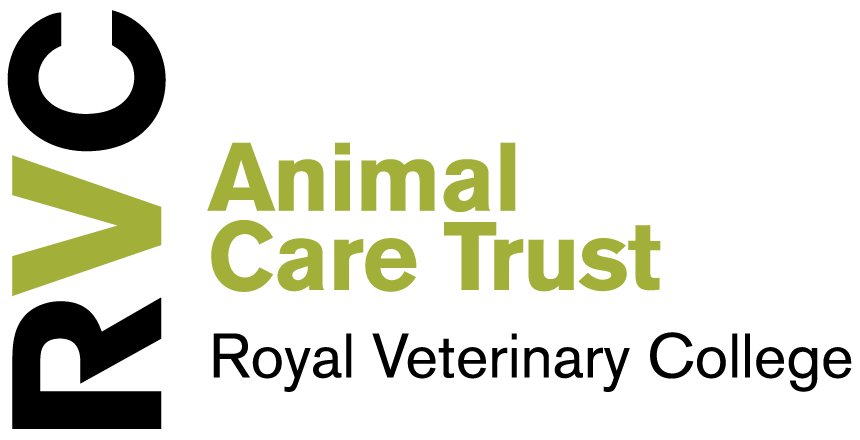How the ACT are helping brachycephalic dogs
It has been widely reported that flat-faced (brachycephalic) breeds of dogs, particularly the increasingly popular French bulldogs and pugs, often have severe health issues. The RVC set up a specialist Brachycephalic Clinic to try to help these dogs and the ACT has supported a range of initiatives to help.
Eye health
Brachycephalic dogs often have large, prominent eyes. These can have poor tear production contributing to an unhealthy surface of the eye. If the surface of the cornea is broken, bacteria can enter. The bacteria can then produce chemicals called collagenases that eat away the cornea – this process is described as corneal melting. Also known as corneal malacia, this is a serious, vision-threatening condition, which can cause rapidly progressive ulceration and even perforation of the cornea. A significant number of cases of corneal melting require surgery which often results in extensive scar tissue and visual impairment. Advanced cases can require the eye ball to be removed (enucleation) and some owners even elect for euthanasia over treatment. Brachycephalic dogs also have prominent nasal folds underneath their eyes which dramatically increase the risk of corneal ulcers. Alarmingly, more than half of the bacteria identified in association with corneal ulcers have been resistant to most antibiotics. The nasal fold on bracycephalic dogs provides an ideal environment for bacteria and is in close proximity to the cornea but this close connection has not been fully investigated until now.
Funding new technology
The ACT has funded new technology, a Corneal Collagen Crosslinking (CXL) device, to help treat corneal malacia and infectious corneal diseases. CXL can be used in dogs, cats and horses. It uses UV light to kill microorganisms (such as bacteria and fungi) which commonly contribute to the melting process and can be particularly effective against bacteria which are resistant to antibiotics. This new device has helped researchers establish a short duration protocol (accelerated CXL) for awake or sedated patients. The device enables the cornea to be irradiated in only 3 minutes (rather than 30), often avoiding surgery and a general anaesthetic. This is a huge advantage to all pets but particularly brachycephalic dogs because they are at a higher risk of complications from anaesthetic. The QMHA is one of the few veterinary centres in Europe to use this new technology and first clinical results of accelerated CXL are promising.
Advancing research
The ACT has funded a pilot project to study a group of brachycephalic dogs both with and without corneal ulcers. The research will examine their nasal folds, size/skull shape and the bacteria found in the skin. It is hoped this research will uncover how the disease progresses and may provide evidence to encourage a reduction in the breeding of dogs with extreme features.
Respiratory Disease
Brachycephalic dogs can suffer from breathing and respiratory issues as airflow to their lungs can be restricted. This happens because their nasal openings tend to be narrow and their nasal passages are obstructed by excessive soft tissue. There are other factors too: a thickened and elongated soft palate makes swallowing and breathing difficult, a floppy larynx can collapse and obstruct breathing and an under-developed windpipe makes it difficult for air to get to the lungs. Due to a reliance on subjective clinical signs, respiratory disease can be challenging to assess. Traditional monitoring techniques Like exercise tolerance tests. can be invasive and increase patient risk.
Funding new technology
The ACT funded the purchase of a whole-body plethysmography (WBP) equipment for the Queen Mother Hospital for Animals (QMHA). WBP is a sealed, Perspex chamber which receives constant ventilation and is attached to monitoring equipment. Pets are placed in the WBP so their breathing can be analysed. As the patient breathes, the variation in chamber pressure, humidity and CO2 concentration is used to calculate respiratory function. Obtaining these measurements takes approx. 30 minutes. This equipment helps our vets to understand the severity of the disease, how it’s progressing and the patient’s response to treatment. ACT funding enabled three chambers to be purchased for different sized pets. This equipment offers a non-invasive method to assess patients’ respiratory function with no requirement for patients to be sedated while measurements are taken. This equipment is a huge benefit to the RVC’s Brachycephalic Dog Clinic because of number of assessments needed and the breed’s increased health risk during anaesthetic. Read the RVC’s latest research in to brachycephalic health and welfare

